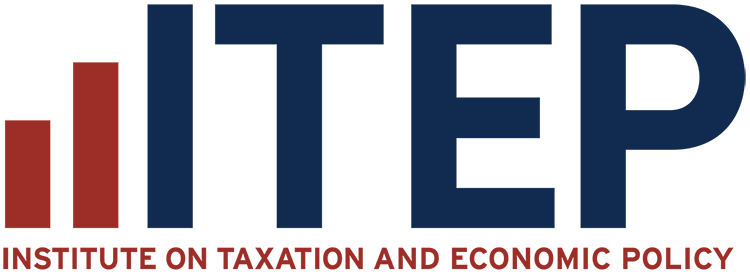
Recent Work by ITEP
Why States That Offer the Deduction for Federal Income Taxes Paid Get it Wrong
August 1, 2011 • By ITEP Staff
As states continue to grapple with the impact of the most recent economic downturn, the budget revenue outlook for many states remains bleak. In this context, states must find ways to generate additional revenue without increasing the tax load on individuals and families struggling to make ends meet. For six states--Alabama, Iowa, Louisiana, Missouri, Montana, and Oregon--one straightforward approach would be to repeal the deduction for federal income taxes paid. Repealing the deduction would help these states reduce their budgetary gaps and make their tax systems less unfair. This policy brief explains how the deduction for federal income taxes works…
The personal income tax can be--and usually is--the fairest of the main revenue sources relied on by state and local governments. When properly structured, it ensures that wealthier taxpayers pay their fair share and provides lower tax rates on middle-income families. The personal income tax can be used to offset regressive sales, excise and property taxes. This policy brief explains the basic workings of the income tax.
Most of us don't need to be reminded about inflation. We experience it every day, as the price of the goods and services we buy gradually goes up over time. As the cost of living goes up, our incomes generally go up too, partially because of inflation. But many state tax systems are not designed to take account of inflation. The result is that income taxes often grow faster than incomes--even though lawmakers haven't actually passed any laws to make this happen. Some lawmakers have responded to this "hidden tax hike" by indexing their income taxes for inflation. This policy…
How State Tax Changes Affect Your Federal Taxes: A Primer on the “Federal Offset”
August 1, 2011 • By ITEP Staff
State lawmakers frequently make claims about how proposed tax changes would affect taxpayers at different income levels. Yet these lawmakers routinely ignore one important consequence of their tax reform proposals: the effect of state tax changes on their constituents' federal income taxes. Wealthier taxpayers can use the federal income tax to partially offset their state and local income and property taxes. This "federal offset" has important implications for how state tax changes affect people. This policy brief explains this important but often-forgotten link between state and federal taxes.
The property tax is the oldest major revenue source for state and local governments. At the beginning of the twentieth century, property taxes represented more than eighty percent of state and local tax revenue. While this share has diminished over time as states have introduced sales and income taxes, the property tax remains an important mechanism for funding education and other local services. This policy brief discusses why property is taxed and how property taxes are calculated.
Simplicity is generally seen as a virtue in state tax systems. Simplicity makes it easier for taxpayers to understand (and to pay) their taxes, and makes it easier for tax administrators to collect taxes fairly. In recent years, state lawmakers have proposed a wide variety of income tax changes under the guise of simplification. Yet not all of these purported tax simplification measures are well-designed to achieve it--and some measures would unnecessarily reduce the fairness of the income tax. This policy brief evaluates options for making state income taxes less complicated.
Tax Policy Nuts and Bolts: Understanding the Tax Base and Tax Rate
August 1, 2011 • By ITEP Staff
This policy brief explains two basic, but important tax policy terms- the tax base and tax rate. Since these concepts are often confusing, having a grasp on the ins and outs of tax bases and rates will help provide a better understanding of how all state and local taxes work.
Everyone agrees that tax "fairness" is important--even though there is often disagreement on what fairness means. A well-informed debate on who should pay the most taxes must start by assessing who actually does pay the most--and the least. Too often taxes are studied only with an eye towards tax rates instead of an understanding of how taxes impact people depending on their income. Tax incidence analyses answer basic questions by measuring how taxpayers at different income levels are affected by the current tax system and various tax reform alternatives. This policy brief provides a basic introduction to using ITEP's tax…
A robust corporate income ensures that profitable corporations that benefit from public services pay their fair share towards the maintenance of those services, just as working people do.. More than forty states currently levy a corporate income tax. This policy brief explains why corporations should be taxed and the basic workings of the corporate tax.
The “QPAI” Corporate Tax Break: How it Works and How States Can Respond
August 1, 2011 • By ITEP Staff
The past quarter century has seen a dramatic decline in the yield of corporate income taxes at both the federal and state levels. Major federal corporate tax legislation enacted in 2004 created a new tax break, known as the "Qualified Production Activities Income" (QPAI) deduction that has further accelerated the decline of the corporate tax. This policy brief evaluates the QPAI deduction and discusses possible state policy responses.
